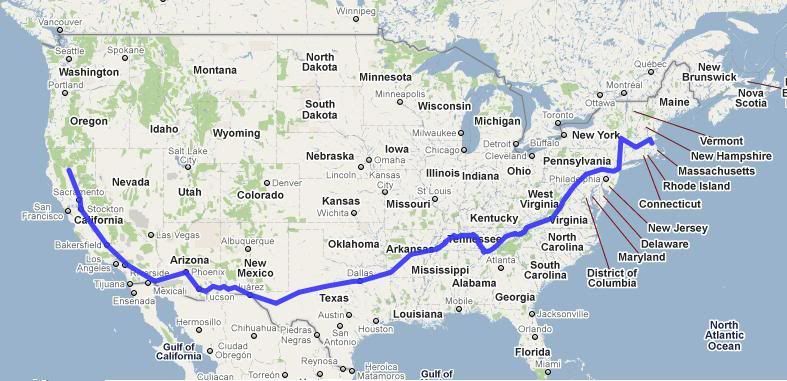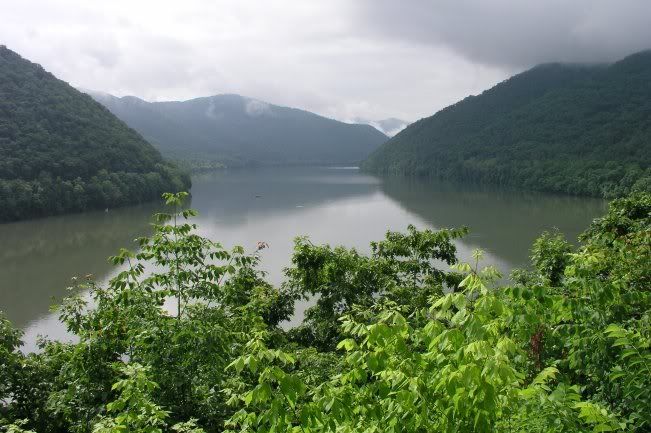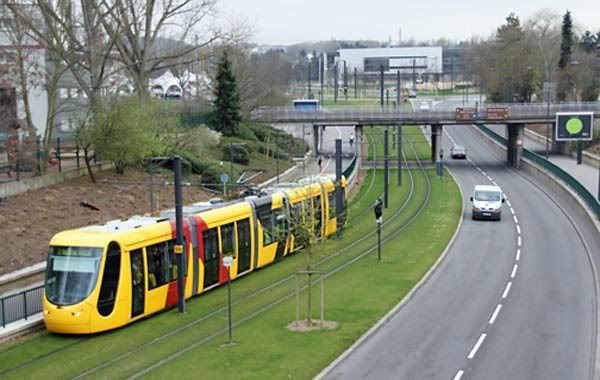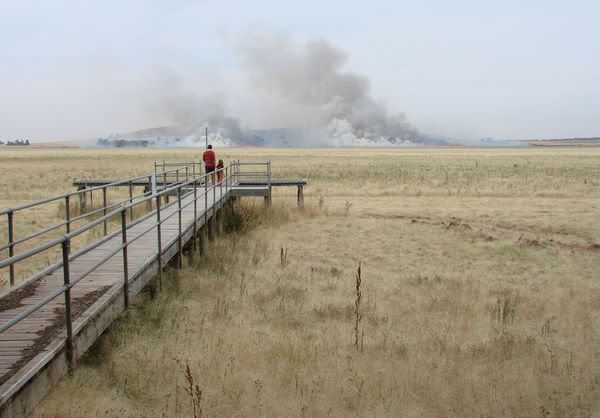Burning the Midnight Oil
 (Right: Liberty Line) The Steel Interstate proposal is an effort to build Rapid Electric Freight Rail Tollways across the country ~ east to west and north to south ~ to:
(Right: Liberty Line) The Steel Interstate proposal is an effort to build Rapid Electric Freight Rail Tollways across the country ~ east to west and north to south ~ to:
- Take a substantial slice our of our oil imports
- Insure our national economy and national defense against disruptions of our oil supply
- Increase the productivity of our manufacturing and logistics sectors,
- Overcome decades of neglect of our national electricity transmission infrastructure, and
- Protect our legacy investment in our Interstate Highway system from the battering it receives at the hands of long haul trucks.
The point of the Steel Interstate system is that it is a system: it consists of several parts that work together to give more bang for the buck than any one could provide on its own.

 Way back before the Super Bowl, the White House had a series of exciting announcements, covered at
Way back before the Super Bowl, the White House had a series of exciting announcements, covered at  The flashy rail projects are the very HSR projects to build bullet trains serving urban areas with millions of people.
The flashy rail projects are the very HSR projects to build bullet trains serving urban areas with millions of people. I’ve written several times about the direct potential of the Steel Interstate project to cut our oil imports by 10% by getting long haul freight trucking off the road. It would at the same time relieve the crushing burden imposed by long haul trucking on our over-worked, under-maintained Interstate, National and State highways, help get renewable energy resources from places that they are to places people need electricity, and of course support long distance Rapid Passenger Rail offering dramatically improved reliability and transit speed, supporting operating surpluses with multiple services per day.
I’ve written several times about the direct potential of the Steel Interstate project to cut our oil imports by 10% by getting long haul freight trucking off the road. It would at the same time relieve the crushing burden imposed by long haul trucking on our over-worked, under-maintained Interstate, National and State highways, help get renewable energy resources from places that they are to places people need electricity, and of course support long distance Rapid Passenger Rail offering dramatically improved reliability and transit speed, supporting operating surpluses with multiple services per day. I was reading a
I was reading a  As
As 
 In the firefly-dreaming edition of last week’s
In the firefly-dreaming edition of last week’s  This week in The New Republic, Richard Florida
This week in The New Republic, Richard Florida  Recently,
Recently,